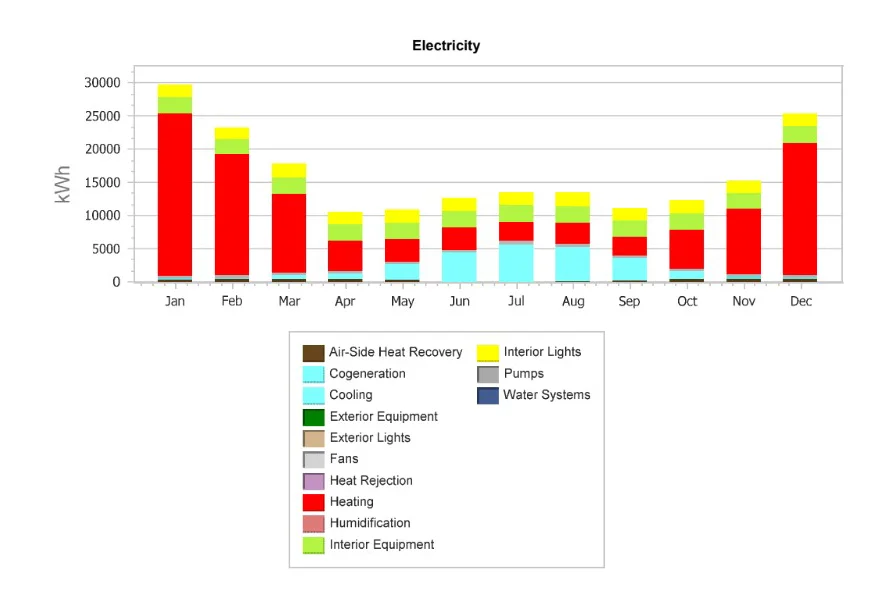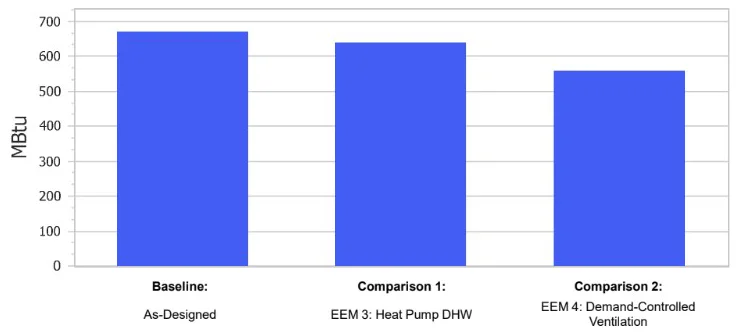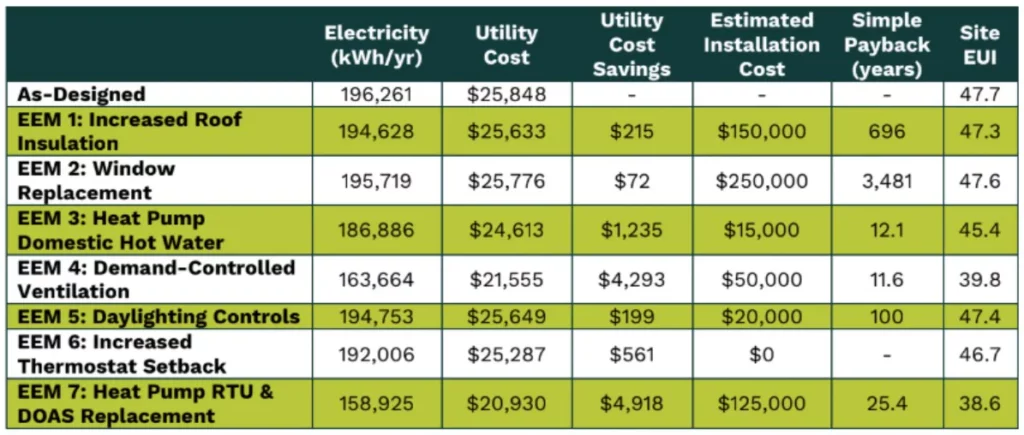Unlocking Energy Efficiency: How Energy Modeling Supports Adaptive Reuse

Adaptive reuse of both modern and historic buildings is a powerful strategy for sustainable development—it preserves cultural heritage while reducing the environmental impacts associated with demolition and new construction. But when these older structures are reimagined for modern use, they often pose a challenge: how do you improve energy performance while respecting their historic integrity?
This is where energy modeling becomes an essential tool.
What Is Energy Modeling?
Energy modeling is the process of creating a virtual simulation of a building’s energy performance. Using specialized software, sustainability engineers input a building’s architectural and mechanical characteristics—insulation, HVAC systems, window performance, lighting, occupancy patterns, and more—to predict how much energy it will use over time.
This model allows project teams to analyze different design choices and retrofit strategies before construction begins, helping them understand the potential for energy savings, cost reductions, and greenhouse gas emissions improvements.
For example, this chart shows an example of expected reduction in use of energy consumption for a building if either a heat pump replaces the heating system, or if demand-controlled ventilation is added.

Why Energy Modeling Matters in Adaptive Reuse
Older buildings weren’t designed with modern energy standards in mind. Their construction methods, materials, and passive systems—like thick masonry walls or operable windows—offer both opportunities and limitations. Energy modeling provides insight into which upgrades (like added insulation, high-efficiency mechanical systems, or lighting retrofits) will yield the best results without compromising the building’s historic features.
For architects, building owners, and sustainability professionals, energy modeling bridges the gap between preservation and performance.

Every aspect of a building is analyzed for current effect on energy use and the potential for improvement. Seasonality plays an important role and must be considered as well. Sometimes, conflicts arise between energy reduction goals and historic preservation. For example, in one Encore project which adapted a factory building, the client sought to add insulation in interior exposed brick walls, however state preservation historic agencies prevented the covering of interior brick walls with insulation.
A Real-World Example: CASA’s Rockville Welcome Center
Encore Sustainable Architects is currently leading the newest adaptive reuse project for long-time client CASA in Rockville, Maryland—the Rockville Welcome Center—which highlights the role of energy modeling in real-time. As the first of three Encore-led projects undergoing this type of analysis, Rockville is aiming high: it is actively pursuing Net Zero certification, meaning the completed building will seek to produce as much energy as it consumes annually.
To support this goal, we’ve partnered with Lorax, a Baltimore-based firm that specializes in sustainability engineering. With funding from a State of Maryland grant, Lorax is conducting detailed energy modeling to identify energy-saving opportunities and inform key design decisions.
By modeling different scenarios—like improved insulation levels, high-performance HVAC systems, or solar energy integration—we can find the optimal balance between energy performance and architectural preservation.

This chart is for decision-making. It tells you what each energy improvement option costs, how much energy savings there are to be had, and how long it will take to pay back the cost. Not every option is fiscally viable.
Here’s two examples:
- This building recently just had six inches of insulation added to the roof. The first option in the chart, EEM1: Increased Roof Insulation is therefore not a great choice.
- A quick look in the “Simple Payback” column, shows us that EEM4: Demand-Controlled Ventilation has the fastest payback and provides more than $4000 in savings in Utility Costs per year.
CASA Projects: Continuing the Commitment to Performance
In addition to Rockville, energy modeling is underway for two other Encore/CASA projects:
- The CASA de Maryland Headquarters, also known as the historic McCormick-Goodhart Mansion, was originally designed to be LEED Gold certified. The upcoming energy model could help identify further improvements that could bring the building closer to Net Zero performance.
- The CASA Baltimore Regional Educational and Employment Center, housed in the historic Belnord Theatre, was also adapted to become LEED Gold certified. Energy modeling here supports a continued commitment to energy excellence in an architecturally significant space.
Encore’s participation on all three projects ensures that the modeling results are meaningfully integrated in the architecture—helping us create buildings that are beautiful, functional and resilient.
Looking Ahead
As energy codes become more stringent and the demand for high-performance buildings grows, energy modeling will be an increasingly valuable tool for historic preservation projects. At Encore Sustainable Architects, we’re proud to be at the forefront of this movement—proving that with the right approach, even century-old buildings can meet the challenges of the 21st century.
